1897年(明治30年)に、小説家である徳富蘆花は赤坂から逗子に拠点を移した。田越川沿いの旅館柳屋に宿を取り、4年間ここで執筆活動をした。兄である徳富蘇峰が主宰する國民新聞に逗子をはじめとする湘南地域の自然を描いた「湘南歳余」「湘南雑筆」を連載し、「自然と人生」や代表作となった小説「不如帰(ふじょき)」を発表した。
この徳冨蘆花が過ごした逗子市にある『桜山の桜』が素晴らしい。
特に、山間の緑と薄い山桜の色合いに心惹かれる。それは春の入学や門出などに、まさに花を添えている。
時の経過とともに満開から、雪が降るような花吹雪の中で、移り来たものと過ぎ去りし徳冨蘆花の時代とを重ねながら、移ろうもの、そして変わらぬものを想う。
徳冨蘆花が遺した(著した)永続する表現の中にある『時代の情緒(心情)』を再び噛みしめてみたい。
そこで徳冨蘆花の「自然と人生」にある『寫(写)生帖』の中の『櫻(さくら)』を取り上げ、春の桜の美しさと近づく時代のの緊張感を桜の花のイメージのもとで、徳冨蘆花の時代と対比しながら鑑賞することで、まさに咲き、そして散る花のように移ろう季節(桜花、出会いと別れ)を留め置きたい。
日本語の表記が旧漢字仮名遣いなので、読むのが多少は難しいと思われるが、英訳なども意味の対比と参照のためにつけました。
タイトルの『櫻(桜)』は"A Branch of Cherry Blossoms(桜の一枝)"と訳されているのも参考になります。
貴方の心も、彼方の『櫻(桜)の一枝』が届くのならば幸いです。
櫻(さくら)
二十餘年の昔、一個(ひとり)の童、一個(ひとり)の成人に手を引かれて肥後の木山と云ふ田舎町を過居たりき。
時は明治十年にて、童は戦争を逃げて親戚の家に行く途中なりけり。木山町には、薩軍の本營を置き、病院を設けたれば、所として薩人ならざるはなし。大小不同の小銃を稲塚の如く積みたるあり。泥塗れの青毛布を曝らして、虱をとりつゝこくり〳〵居睡るあり。股引の破れを繕ふ男あり。鐵砲の掃除しつゝ聲高に語るあり。童は右を見左を見、分からぬ薩語 に耳を轟 とゞろかし、恐る〳〵連れなる男の手につかまりて行きぬ。敗北打續き、弾糧乏しく、運命日に蹙る陣中にも、犹笑ふ可き餘裕はありけるにや、此處ゝ其處に高聲の笑語も聞へぬ。賊と云へども、鬼にもあらざりしと思いつゝ童は犹も歩み行きけるに、向ふより歩み來る男あり。鼠色の洋服の甚く色褪めたるを着て足駄だ穿 、朱鞘の長刀を落とし揷しにし、左手では繃帶して頸より釣り、右手に今を盛さかりの山櫻一枝持ちて、ぶらり〳〵歩み來りしが、忽ち側の店先きに刀を磨げる男に呼びかけられて、彼櫻の枝を朋輩の鼻さきに突きつけ、何やらん早口に二言三言口走りつゝ呵々〳〵と打笑ひつ。 恰も側を過ぐる童に其櫻の枝を與へて、「恐ろしかンぢやつトな。はゝゝゝ」櫻笑ひすてゝ去りぬ。その櫻は半里ばかり童の手に持たれて、遂に道側の小川がはに投げ込まれぬ。童は今此事を記す吾なり。彼櫻を呉れし朱鞘の男は何と云ふ男ぞ。如何になりしぞ。沓として知る可からず。
されど二十年來櫻花を見る每に、彼朱鞘の男は何處よりか飛び來つて、髣髴(ほうふつ)として吾に現はるゝなり。
英訳
*アーサー・ロイド(Arthur Lloyd)
From "NATURE and MAN"
-144-
A Branch of Cherry Blossoms
櫻
MORE than twenty years ago, a boy led by a man, was passing through the country town of Kiyama in Higo. It was the tenth years of Meiji, the year of the Seinan civil war, and the boy was on his way to his relatives, to escape the dangers of the war.
As the head quarters of the Satsuma army and their hospital were stationed in Kiyama-Machi, Satsuma men were seen about everywhere. Guns, both large and small, were piled up like stacks of rice-straw. Some of the men were dozing as they dried their muddy blankets, and others were mending torn clothes. Some chatted together as they cleaned their guns. The boy gazed about him, listening to the strange Satsuma dialect, as his companion led him along.
Defeated on every side, with provisions and ammunition falling short, the fate of this army was but too certain: yet in the camps men were still heard to laugh and the sound of cheerful voice rose in the air.
Rebels though they were, they were neither mean-spirited nor bad, thought the boy. A man came towards him. Dressed in faded grey, with high clogs on, and a long sword in a red case at his belt. His left arm was bandaged and hung down from the shoulder, and in his right hand he carried a branch of cherry blossoms.
When a man, who was sharpening a sword at a shop near by, addressed him, he waved the flowers in the man’s face, and laughed as he said a few words. Then, handing the branch of cherry blossoms to the boy, he said, “ Are you afraid; my lad? And left him. The boy carried them for about a mile, and at last threw them into a brook by the way, I was that boy, but who was the man with the sword in the red case, who gave me those flowers? What became of him? I have never known, but during the twenty years that have passed since then, the sight of cherry blossoms recalls to my mind the man with the sword in a red case.
『降る雨に 重く桜の 愛しさ』
貴方の心に、彼方の『桜の一枝』の想いが届いたのなら幸いです。
*アーサー・ロイドに関して、立教学院院長広田勝一氏からのメッセージがありましたので、時代の補足として一部を紹介します。
https://www.rikkyo.ac.jp/aboutus/philosophy/spirit/principal/
「愛は、全てを完成させるきずな」 ―感謝の歴史―
東日本大震災から一年と二カ月の時を迎えようとしています。今年本学に震災という苦境の中にありつつも、入学された方々も多くいることと思います。昨年は、その年の世相を漢字ひと文字で表す語に「絆」が選ばれました。特に震災支援に関連してこの言葉は多様に用いられてきました。ただ最近、教会等では「寄り添う」「寄り添って生きる」という表現が時々用いられています。
ところでこの絆、聖書に出てくるのか気になり読んでいましたら、コロサイ書にありました。新共同訳です。「これら全てに加えて、愛を身に着けなさい。愛は、全てを完成させるきずなです」(3章14節)。以前の口語訳では「愛は、全てを完全に結ぶ帯である」と訳されています。翻訳が難しい箇所です。全てを完成させる結びの帯、絆にせよ、ここには「共に結ぶもの」という意味があります。愛が絆を、帯を完成させていきます。絆は、こうした愛に基づくものであります。愛と真理に基づく共同体としての私たち、そしてわが立教学院でありたいと願うのです。・・・
(中略)
さて、今年度の話題として、ここでアーサー・ロイド師に触れたいのです。現在池袋キャンパスで工事中のロイドホールに、この秋には池袋図書館がオープンとなります。大学にとり施設面では最大の大きさでしょう。昨年竣工された高層のマキムホールは、正門から見れば位置的に裏側になります。しかしロイドホールは、立教通りに面しますのでかなり目立つでしょう。この建物の名称になったロイド、立教学院総理として6年間活躍されました。自身英国人でありつつも、マキム主教の理解と支援もあり米国聖公会日本ミッションの宣教師としての働きもあります。
私がこの10数年間牧師をしてきた埼玉県の浦和諸聖徒教会もこのロイド司祭により開拓され、1899(明治32)年講義所、2年後には教会に昇格されています。以前浦和の教会100年誌を編纂し、そこでロイド司祭の存在を遅ればせながら知ったのです。また浦和にあった刑事施設(当時の監獄)での伝道も含めて、短期間でありますが、精力的な伝道活動にあたりました。
ロイドは1897年、マキム主教によって立教の総理に任命され、それまでの慶応義塾から立教に移ります。やがて宗教教育の禁止事項の訓令12号がでます。ロイドの立教でのこの訓令への対処、戦い、措置は今後も語り継がれるでしょう。ロイドの立教辞任後の4年後に、後任のタッカー師により、立教学院立教大学が誕生しますが、この基礎を確実に築いたのがロイドでもありました。マキム主教は、ロイドの働きを絶賛するとともに、3人分の仕事をしてきたと述べます。
またロイドは、ウィリアムズ主教がリッチモンドにおいて81歳で逝去された翌年、1911年10月27日に59歳の若さで逝去され、青山の外国人墓地に埋葬されました。現在は逝去100周年の年、この時にロイドホールが竣工するのも、記念すべきことでしょう。ここに「導かれた歴史」を感じます。マキム主教はロイドの逝去に当たり「この謙虚な学者で礼儀正しいキリスト教徒の紳士である情熱的な宣教師は、彼を知る人々の心に長く銘記されるでしょう」と語ります。・・・(後略)
追加情報
http://library.rikkyo.ac.jp/digitallibrary/arthurlloyd/explain/explain_01.html より転載⬇︎
アーサー・ロイド について / About Arthur Lloyd
英国人アーサー・ロイドは、英国教会系ミッションSPG(Society for the Propagation of the Gospel. 福音宣教協会)宣教師として1884(明治17)年に来日、10年後の1894(明治27)年からは米国聖公会内外伝道協会(Domestic and Foreign Missionary Society of the Protestant Episcopal Church in the USA)宣教師として1903(明治36)年までの9年間を伝道事業に従事した。
ケンブリッジ大学を優秀な成績で卒業したロイドは、学士、文学修士を取得、15か国語に通じていたといわれ、来日わずか7か月目には早くも日本語で説教をおこなっている。福澤諭吉から慶應義塾の教員のなかで唯一真の学者と当初から認められていたロイドは、慶應義塾で11年にわたり(1885-1890 / 1893-1898 / 1904)教鞭をとった。
さらに、米国聖公会在日ミッション統括者ジョン・マキムに請われて、同派経営の立教学院で5年半(1897.12 - 1903.4)にわたり学院総理を務めた。この間ロイドは、政府認可校において宗教教育を禁じる1899(明治32)年の文部省訓令12号問題に対し、間接的であれ学内で一定のキリスト教教育が可能であれば訓令を順守するという方針で乗り切った。その結果認可校として存続した立教は、上級学校への進学資格や徴兵猶予の特典を維持することが出来た。それと同時に、ロイドは立教における一般教育を強化する教育方針をとり、立教中学校を、訓令発布1年後の高等学校入学試験で受験者(11人)全員が合格した唯一の学校に成長させた。受験生の半分以上が合格した学校はほかになく、これは全国で最上位の成績であった。
こうして当代日本における最大のミッション・スクールとなった立教中学校は、その後の専門学校令による立教学院立教大学設立(1907年)への道を切り開く、大きな要因ともなったのである。
ロイドは慶應、立教のほかに、海軍医学校、海軍兵学校(Naval Academy)、東京専門学校(現・早稲田大学)、東京高等商学校(現・一橋大学)、東京帝国大学(現・東京大学)でもラフカディオ・ハーン後任の英文学教授として教壇に立っている。
ロイドは、尾崎紅葉の『金色夜叉』、徳富蘆花の『自然と人生』などの英訳書や一連の仏教研究書を刊行しており、第二次世界大戦後の1956年においてもロイドの仏教研究所は必読書とされていた。日本アジア協会発行『紀要』(Transactions of the Asiatic Society of Japan)への諸論稿や、日本関連の諸著も多数公刊した学者として知られた人物でもあった。
1911年10月27日に永眠したロイドの葬儀には、教育界や宗教界から総勢300余人が参列して哀悼し、ロイドが異国日本で広く認知されたことが示された。
(立教大学学院史資料センター)
Arthur Lloyd, who is British, came to Japan in 1884 as an Anglican missionary for the Society for the Propagation of the Gospel (SPG). Ten years later, in 1894, he became a missionary for the Domestic and Foreign Missionary Society of the Protestant Episcopal Church in the USA, and engaged in missionary work for nine years until 1903.
Lloyd graduated with excellent results from the University of Cambridge, holding a bachelor’s degree and a master’s degree. He was said to speak fifteen languages, and was preaching in Japanese only seven months after arriving in Japan. Recognized by Yukichi Fukuzawa from the beginning as a truly unique scholar among the teaching staff of Keio Gijuku (Keio University), Lloyd taught there for 11 years (1885-1890, 1893-1898, and 1904).
On the invitation of John McKim, mission overseer of the Protestant Episcopal Church in Japan, Lloyd served for five and a half years (December 1897-April 1903) as president of Rikkyo Gakuin, which was of the same denomination. During that period, Lloyd overcame the problem of the Ministry of Education’s Directive No. 12 in 1899, which banned religious education at government-accredited schools, by his policy of observing the directive so long as Christianity could be indirectly taught to some extent on campus. As a result, Rikkyo maintained its accreditation and continued to be able to grant students access to higher education and exempt them from military conscription. At the same time, Lloyd established an educational policy of strengthening Rikkyo’s general education, resulting in St. Paul’s Middle School becoming the only school where all students (11 students) taking the high school entrance examination passed a year after proclamation of the directive. This was the best performance in the whole country, with no other school getting more than half of its examinees through the examination.
St. Paul’s Middle School went on to become the largest mission school in Japan today, which was a major factor in later opening up the way for the foundation of St. Paul's College, Tokyo (1907) under the government’s Acts of Colleges.
In addition to his work at Keio and Rikkyo, Lloyd also taught at the Imperial Naval Medical College, the Imperial Japanese Naval Academy, Tokyo Senmon Gakko (currently Waseda University) and the Tokyo Higher Commercial School (currently Hitotsubashi University), and succeeded Lafcadio Hearn as professor of English literature at Tokyo Imperial University (currently the University of Tokyo).
Lloyd published English translations of Japanese literatures, such as “Gold Demon” (“Konjiki Yasha”) by Koyo Ozaki and “Nature and Man” (“Shizen to Jinsei”) by Roka Tokutomi, as well as a series of Buddhist studies. His Buddhist research papers were considered required reading as late as 1956, after World War II. He was also famous as a scholar for his articles in the “Transactions of the Asiatic Society of Japan” and countless other Japan-related publications.
Lloyd passed away on October 27, 1911, and his funeral was attended by more than 300 mourners from educational and religious circles, which was evidence of how widely recognized he was in this foreign country, Japan.
(The Rikkyo Archives)










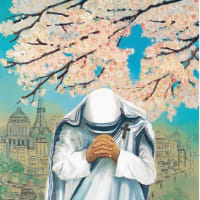
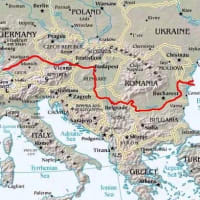

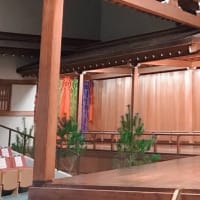
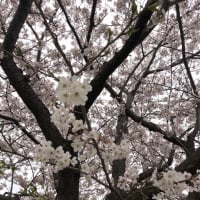
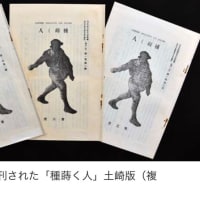
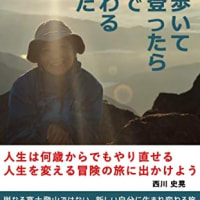
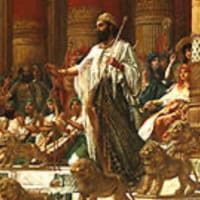
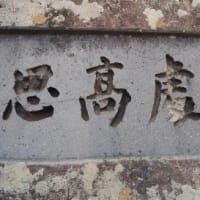
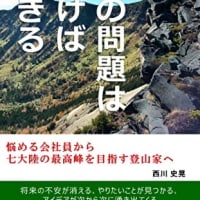
※コメント投稿者のブログIDはブログ作成者のみに通知されます